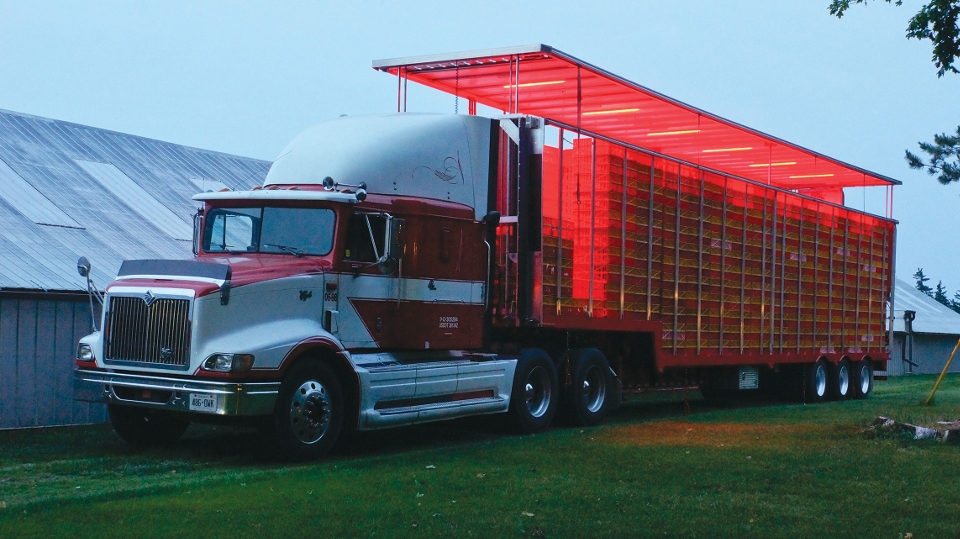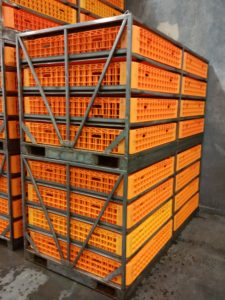
Photo courtesy of the Canadian Poultry and Egg Processors Council
In chicken farming, our birds are being raised for meat. That means the day will come when the birds that farmers have worked hard to keep healthy and safe will be removed from the barn and sent to the processing plant to be humanely slaughtered and then cleaned and packaged for food. Farmers, catchers and processors work together so this happens with the least amount of discomfort for the chickens.
There is a lot of work ahead for the catching team who will load all the chickens, each around 2 kilograms, into crates and onto the transport truck. With catching teams of four or five, this means each person will lift about 16,000 kilograms for one barn. How’s that for a workout!
Barn lights are dimmed as this is calming for the chickens. The team of trained catchers enters the barn and care is taken as they move about the barn, lifting the chickens by their legs, and placing them into crates.
Here are just some of the details catchers, farmers and truck drivers cross off their list:
- Eavestroughs are installed on barns to prevent the chickens from getting wet if it is raining when they are moved from the barn to the truck
- Trailers have tarps that can be pulled to prevent the loaded chickens from getting wet or cold. Many trailers also have solid roofs that keep snow and rain off and provide shade during the summer.
- Catchers move slowly in the barn and do not shout because chickens don’t like sudden movement or loud noises.
- Tarps on trucks are adjusted depending on weather conditions. On a hot day, we want more air circulating on the truck to help keep the chickens cool.
- On the farm, the transport trucks are parked away from direct sunlight if possible so any chickens brought on the truck while others are still being caught in the barn are comfortable.
- Transport drivers check on road conditions ahead of time. They want to avoid bumper-to-bumper traffic which could cause the chickens to become overheated
on warm days.

Photo courtesy of the Canadian Poultry and Egg Processors Council
The level of detail is surprisingly minute and even goes right down to the kind of clothes the catchers wear. Chickens don’t like strangers, especially if the strangers are wearing light-coloured clothes. Catchers wear dark garments to prevent the birds from becoming flighty, potentially injuring themselves.
Temporary fencing or gates may be used to bring the chickens closer to crew members and reduce handling time. Catchers learn to observe the way individual flocks react to them and adjust how they catch so it can be done effectively with the least amount of stress on the chickens.





